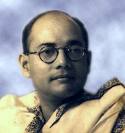Senior Volunteer Feedback Report
The growth of an organization depends upon the people who are leading them. We at Sankalp benchmark all our people on the following five parameters to be able to mark and measure the strengths and weakness of our people and to track the growth of the organization. There five parameters are responsiveness, teamwork, leadership, initiative and delivery.



 "Give me blood, and I shall give you freedom!"
"Give me blood, and I shall give you freedom!"